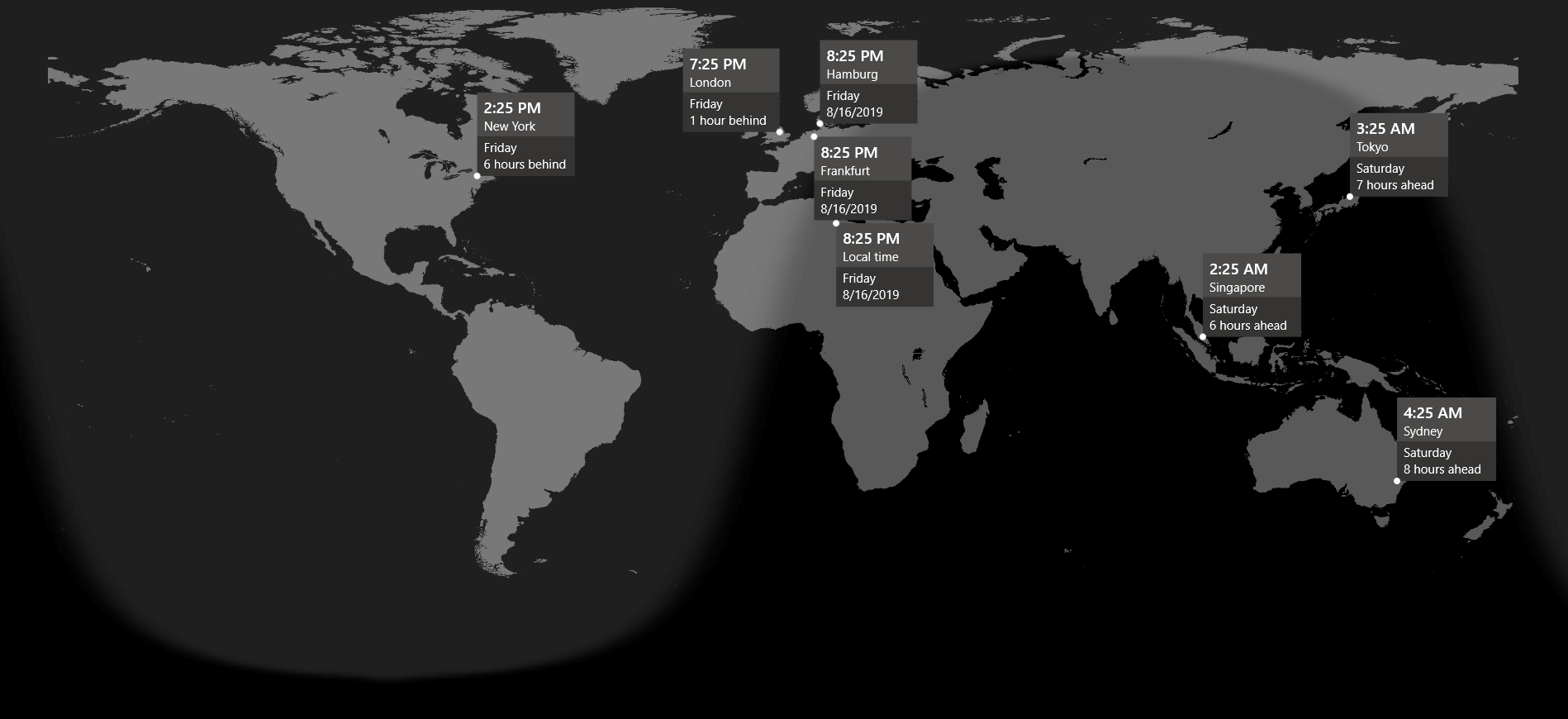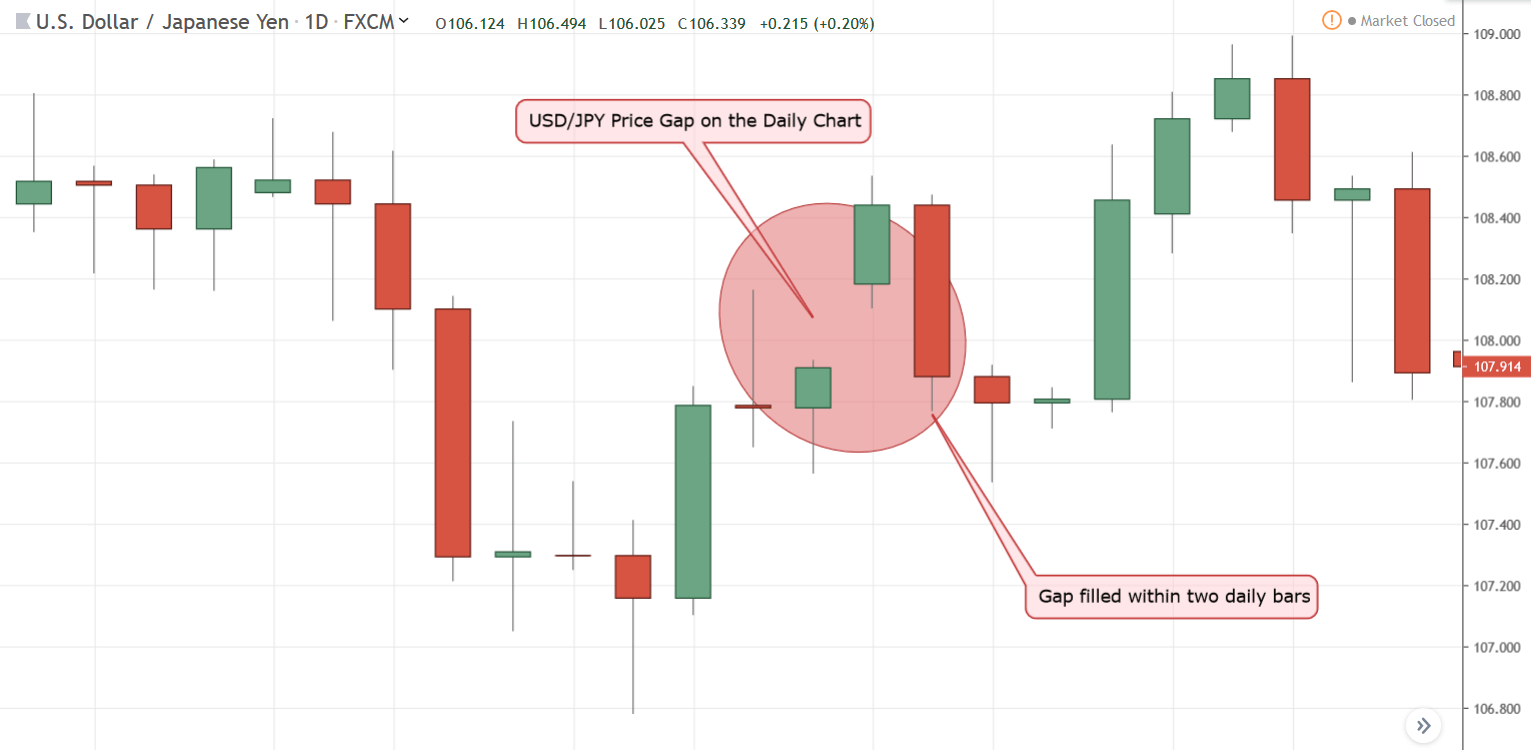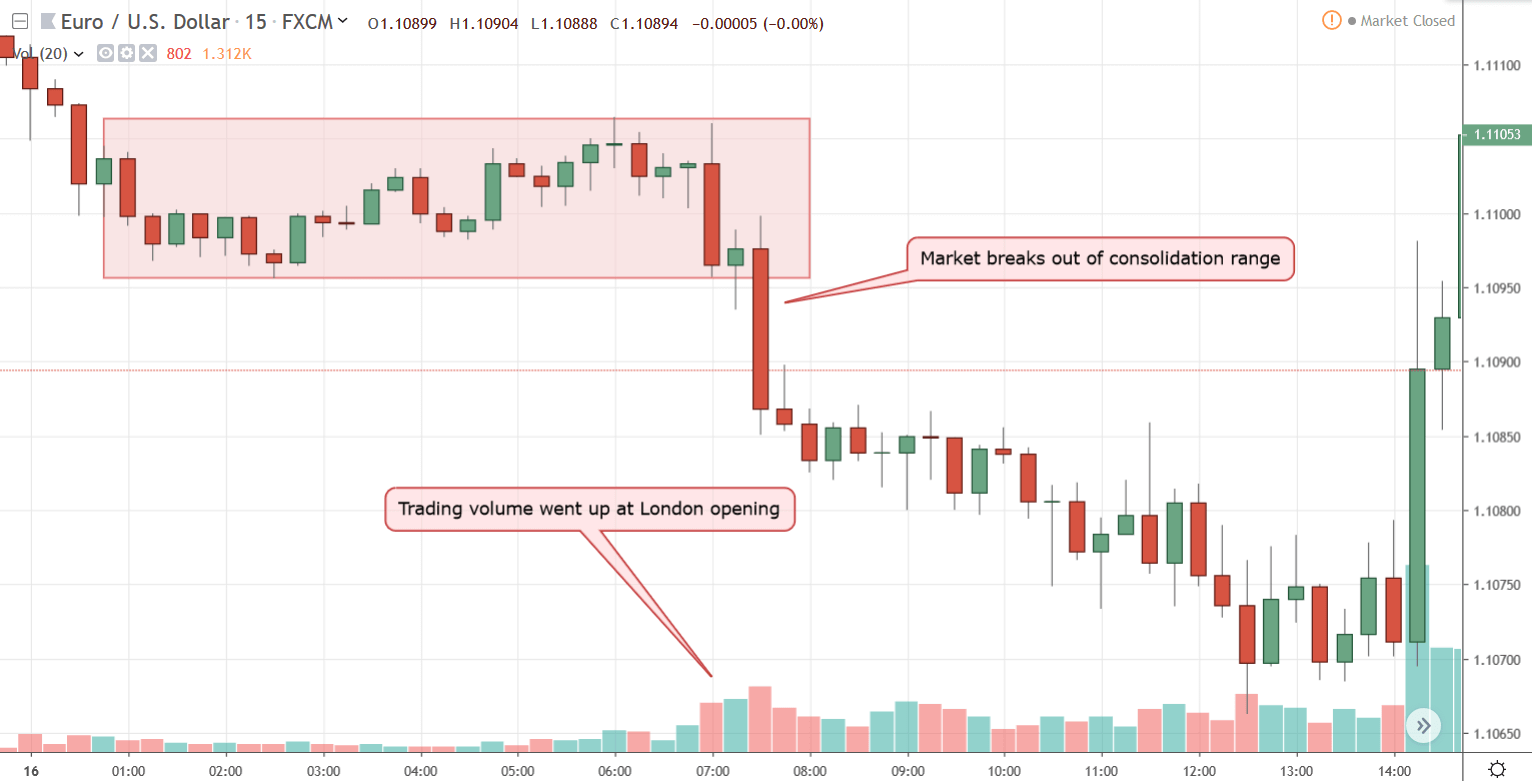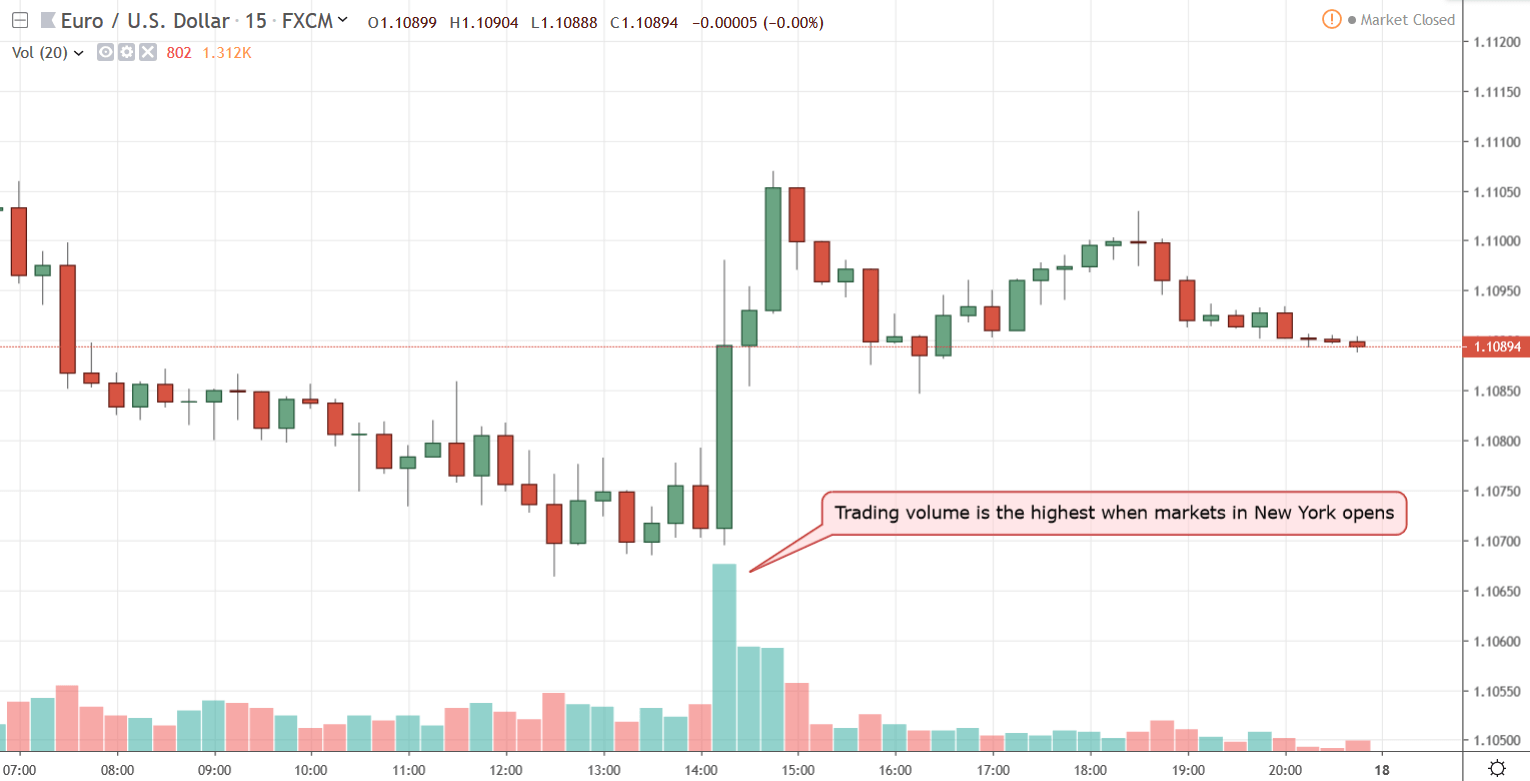Understanding the Impact of Forex Market Hours in Your Trading Strategy
- Understanding Relationship Between Currency Pairs, Trading Volume, and Time Zones
- Why You Should Trade During Certain Forex Trading Hours
- Why Some of the Forex Trading Hours are More Active Than Others
- The Choice of Your Forex Market Hours Depends on Your Strategy
- Forex Market Hours Based Strategy No# 1: Trading Price Gaps During Market Open on Monday
- Forex Market Hours Based Strategy No# 2: Breakout Trading at London Opening Hours
- Forex Market Hours Based Strategy No# 3: Intraday Trading During Second Half of London Session
- The Bottom Line
The FX market is open 24 hours a day from Monday (or Sunday) to Friday (or Saturday) - as one part of the world goes to sleep, another wakes up. That's why we talk about Forex market hours and Forex trading sessions - to describe where and when the different Forex trading sessions are open to trading.
When you first came to know about the global currency market, you probably came in touch with marketing materials claiming that this market remains open 24 hours a day and seven days a week. Anyone who traded equities (stocks) or any other commodities knows that stock exchanges or other markets are usually open during banking hours in a day. However, being a decentralized market, the Forex market has no rigid trading hours.
Nonetheless, the foreign exchange market is an international market that stretches from major financial centers like Sydney and Tokyo in the East to all the way to San Francisco in the West - all located in vastly different time zones. By the time traders in Tokyo go home after work, banks are not even open in New York, which operates during forex market hours est - from 8 a.m. to 5:00 p.m. Eastern Standard Time.
Because the Forex market operates in multiple time zones, it can be accessed at any time. Yet, seasoned traders know that there is an unofficial concept of Forex market hours. It starts at 7:00 am, in Sydney, Australia - at the Australian Eastern Standard Time (AEST) zone, which is 10 hours ahead of the Greenwich Mean Time (GMT) or GMT +10 and ends at 5:00 p.m. in New York, the United States at the Eastern Standard Time (EST) zone, which is 5 hours behind the Greenwich Mean Time (GMT) or GMT -5.
Understanding Relationship Between Currency Pairs, Trading Volume, and Time Zones
You see, the global currency market is dominated by large banks, commercial companies taking part in import and export of goods and services, central banks, hedge funds, and retail forex traders.
Imagine that a deal was made last week between Mitsubishi in Japan and a car dealer in Australia who wants to import 200 units of Mitsubishi's latest Sports Utility Vehicles (SUVs). According to the contract between two parties, the Australian car importer would settle the invoice amount on the first hour of Monday. As soon as the banks open in Tokyo, the Australian importer will need to convert its Australian Dollars to Japanese Yen in order to pay for the cars to the Japanese car manufacturer.
As the payment for 200 cars would a substantial amount, the demand for the Japanese Yen will suddenly go up early on Monday morning, which will turn the Yen bullish. As a result, the AUD/JPY will become bearish.
This is just a simple example, but this is the reason why often prices start to move, and trends are created. The point of this illustration is to make a point that when Japanese and Australian banks are open to conducting international transactions, there is a high probability that the respective currencies, such as the Australian Dollar and the Japanese Yen, will experience increased trading volume. Consequently, the prices of these currencies will fluctuate more compared to outside of the banking hours.
Why You Should Trade During Certain Forex Trading Hours
Theoretically, it is true that there is no central exchange in the Forex market, and anyone can buy and sell currencies any time of the day or any day of the week.
Nonetheless, to trade a Forex pair, you need a counterparty. To buy something you need someone else to sell you want you are trying to buy and vice versa. So, if you are trying to buy USD/JPY in the middle of the night when nobody in the United States or Japan are awake, then there is a good chance that you will have a hard time doing business. This is why in practice; you should spend your active trading hours when there are ample buyers and sellers in the market.
Even if some brokers allow trading during the weekends, the prices of various currency pairs hardly move on Saturday and Sunday. If you are a short-term day trader, who opens and closes trades within a day, trading outside banking hours in major financial centers around the world will also feel like you are trading during the weekend. Because if major financial institutions and professional traders are not placing huge orders that move the market, there is no reason for the solid trends to take place.
Hence, the concept of Forex Market Hours derives from the notion that when major financial markets are open in a given time zone, the volume and liquidity in the market remains high, which in turn reduces the difference between the bid and ask prices and helps traders to fill their orders relatively easily without incurring slippage.
After all, as a retail Forex trader with limited capital, you will not be in a position to move the market. You will solely rely on larger players like banks and institutional investors to create the trends and hopefully catch a few to turn a profit. This is why short-term retail Forex traders should trade only during active banking hours and avoid looking for trading opportunities when the forex market hours clock stops ticking.
Why Some of the Forex Trading Hours are More Active Than Others
Technically speaking, if you exchange 200 U.S. Dollars to get some British Pound for pocket money at an Airport Foreign Exchange Kiosk after arriving in London, in the middle of the night, it would be also considered as a foreign exchange trade. However, as you can guess by now, large billion-dollar, cross-border, transactions do not happen at 3 a.m. at the parking lot of the Heathrow Airport.

These market-moving transactions happen among large banks during their respective banking hours.
Moreover, not all branches of a certain big bank will do these large-scale cross-border transactions. For example, a small branch of the Bank of America in Louisville, Kentucky. However, its downtown Manhattan branch in New York will certainly engage in large-scale foreign exchange deals. Similarly, a branch of the Swiss multinational investment bank, UBS Group AG, in Bangkok will have a lower transaction volume in the Forex market compared to its branch located in a major Asian financial hub like Singapore. Hence, banking hours in the time zone of major financial centers like Tokyo in Japan, Singapore City in Singapore, Frankfurt in Germany, London in the United Kingdom, and New York in the United States generate the bulk of the trading volume in the Forex market. Therefore, liquidity and volatility are usually higher when markets are open in these time zones.
Besides banks engaged in commercial cross-border currency transactions, institutional investors and hedge funds speculating in the international stock exchanges also generate a high volume of foreign exchange transactions. Hedge funds with international exposure often buy and sell a large number of stocks across the globe to diversify their portfolios.
Coincidentally, some of the major forex exchange hubs also host the major stock exchanges. For example, the NASDAQ and the New York Stock Exchange are located in, you guessed it right, in New York; The London Stock Exchange is located in London, and the Tokyo Shoken Torihikijo is based in Tokyo.
So, cross-border investments that require moving funds from one end of the globe to another generally contributes to a higher level of trading volume in the global foreign exchange market. Furthermore, when banks and stock exchanges in more than one major financial centers are open simultaneously, the trading volume and liquidity go up substantially.

This is why the beginning of the New York trading session has usually generated the bulk of the trading opportunities for short-term traders because it opens when the London trading session is also open across the Atlantic. Hence, if you overlay the trading volatility in a forex market hours chart, you can see that it spikes up when trading begins in the financial center located next in the time zone. And so Overlapping hours of the London trading session and the New York trading session is the best time to trade forex, since the market is most active.
The Choice of Your Forex Market Hours Depends on Your Strategy
If you are a swing trader or a trend trader who likes to keep positions open overnight or several days at a time, then paying attention to the forex market hours chart in figure 2 may not be that important. However, most Forex traders are day traders and different trading sessions based on the time zone and geographic location of the financial centers around the world will have a substantial impact on the bottom line.
While the actual trading strategy you have may not change, knowing when to trade can certainly help you stop wasting time looking for trades when are no trading opportunities in the market. Furthermore, success in Forex trading in highly depends on timing, as trends can often reverse and wipe out the profits in your open trades. Knowing when to enter and exit the market based on active Forex market hour can have an immensely positive impact on your profitability and aid in building the confidence you need to succeed in this agile market environment.
Let's take a look at three major Forex market hour-based strategies you can apply today to improve your win rate and increase profitability.
Forex Market Hours Based Strategy No# 1: Trading Price Gaps During Market Open on Monday
Price gaps are the areas on a price chart that represents a missing price data in a chart. While a lot of brokers also show price gaps in line charts, it is best illustrated in a bar or candlestick chart. When a currency pair sharply goes up or down with no transaction in between, it is represented in a price gap.
While most brokers suspend trading during the weekend, the fact is that economic news and geopolitical events still occur on Saturdays and Sundays. As a result, the valuation of different currency pairs can change after the brokers suspend trading on Friday.
When the market re-opens on Monday morning, at 7:00 a.m. in Sydney time, you will often see that there is a huge gap between the closing price of Friday and the opening price on Monday. For example, let's say a hostile country like Iran might have announced to test a nuclear weapon after the market closed on Friday. It will certainly create panic about the global world order and might affect the oil supply, which in turn will affect USD/JPY. As a result, the value of the U.S. Dollar may drop during the weekend. When the market opens on Monday, the USD/JPY price might open significantly lower compared to Friday's closing price.
Trading price gaps on Mondays can be very profitable as most often gaps are filled before the actual trend takes place, be it the continuation of the trend in the direction of the price gap or a complete reversal.

In figure 3, we can see that the USD/JPY price opened much higher on Monday, July 3, 2019, at 108.18 compared to the closing price on Friday, which was 107.91 on June 28, 2019. While the uptrend continued throughout Monday, a bearish retracement started on Tuesday, July 2, 2019, and the gap was filled before the uptrend resumed.
Forex Market Hours Based Strategy No# 2: Breakout Trading at London Opening Hours
The London session is responsible for around 30% of the trading volume, which is the highest among all major Forex market sessions around the world. Hence, often major trends start and end during the London Forex market hours.
If you are a Forex trader who applies breakout trading strategies, it makes perfect sense to look for breakout trades at the opening hours of the London market open. To do so, of course, you need to trade in smaller time frames like the 5-minute or the 15-minute charts.
In terms of the actual trading strategy, trading during the London market opening hour is no different than trading any other time of the day. However, given the significant increase in trading volume at this time, it makes breakout trading much more lucrative.

In figure 4, we can see that the EUR/USD was mostly trading within a narrow range and the trading volume was relatively low. But, as soon as the market opened at 8:00 a.m. in London time, the trading volume spiked up and within 30-minutes the EUR/USD broke below the consolidation zone, starting a sustained downtrend in the market.
If you are a breakout trader, and only have an hour to trade per day, looking for trading opportunities during the London market opening hours can often provide you with ample trades that you may not find at any other time of the day.
Forex Market Hours Based Strategy No# 3: Intraday Trading During Second Half of London Session
As we discussed earlier, when the market in New York opens, the London trading session has already progressed halfway for the day. As a result, the trading volume in the Forex market typically reaches the highest during the day at the opening hours of the New York trading session.

To illustrate the situation at the opening of the New York trading session, take a look at figure 5 to see how the trading volume spiked up the moment market opened.
Most short-term intraday traders decide to trade during the second half of the London session. Because during this time, two of the largest financial centers are operational, which increases liquidity in the market. High market liquidity is a pre-requisite of low spreads and short-term traders who only bag 10-15 pips at a time need low spreads to reduce their cost of business.
If you are an intraday trader, trading during this particular time of the day will certainly be going to increase your odds of success regardless of which technical trading strategy you are pursuing.
The Bottom Line
In the traditional investment environment, volatility is seen as an adverse condition that is associated with risks. In fact, academic finance loathes volatility and try to develop investment strategies that reduce its effect on a portfolio. However, speculative trading, such as trading in the Forex market, requires a decent level of volatility to generate profits. After all, without ample volatility, when the market remains too calm, no profitable trades can be executed.
Hence, knowing which time of the day the Forex market remains most active is an integral part of becoming a successful trader. The best time to trade the global foreign exchange market is when other traders are active in the market and trading volume remains healthy enough for spreads to remain tight.
When banks, stock markets, and commodity exchanges in major financial centers are operational, it creates the underlying liquidity in the Forex market that is necessary for volatility.
You can be a price action trader, or your strategy might rely on a combination of technical indicators to generate trading signals. Regardless of how you trade, knowing when to trade can make or break your strategy.














